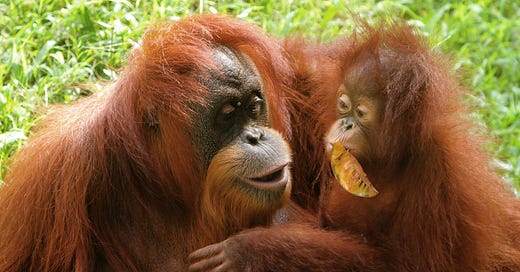Wild orangutans show communication complexity thought to be uniquely human
Researchers have found that wild orangutans vocalize with a layered complexity previously thought to be unique to human communication, suggesting a much older evolutionary origin.
Love what you’re reading?
We’re growing fast and it’s all thanks to readers like you!
Our mission is simple: make the latest research news free and accessible to everyone. We don’t charge fees, and we never will.
If you believe in keeping knowledge open to all, you can support us with a donation:
Every contribution helps us stay free and independent. Thank you for being part of the ScienceDaily community!
Overlooked cell type orchestrates brain rewiring
Researchers have shown in mice that brain cells known as astrocytes are required for a signaling chemical called norepinephrine to modify brain activity, changing the textbook understanding that norepinephrine acts directly on neurons.
Rising temperatures lead to unexpectedly rapid carbon release from soils
How sensitively does organic carbon stored in soils react to changes in temperature and humidity?
New research from an international group looking at ancient sediment cores in the North Atlantic has for the first time shown a strong correlation between sediment changes and a marked period of global cooling that occurred in the Northern Hemisphere some 3.6 million years ago. The changes in sediments imply profound changes in the circulation of deep water currents occurred at this time. This crucial piece of work, which showed sediments changed in multiple sites east of the mid-Atlantic ridge but not west of that important geographical feature, opens multiple doors to future research aimed at better understanding the link between deep water currents, Atlantic Ocean heat and salt distribution and ice-sheet expansion, and climatic change.
New auditory brainstem implant shows early promise
Investigators are developing a new type of auditory brainstem implant that is designed to be soft, and flexible and address limitations of models currently in use. These implants may one day benefit people who can't receive a cochlear implant, such as those with Neurofibromatosis type 2 (NF2) and other severe inner ear abnormalities. In a new preclinical study, researchers report on benefits in large animal models, and based on the results, hope for future trials in humans.
Log in to your computer with a secret message encoded in a molecule
Molecules like DNA are capable of storing large amounts of data without requiring an energy source, but accessing this molecular data is expensive and time consuming. Researchers have now developed an alternative method to encode information in synthetic molecules, which they used to encode and then decode an 11-character password to unlock a computer.
In healthy aging, carb quality counts
Intakes of dietary fiber and high-quality carbohydrates in midlife are linked to increased likelihood of healthy aging and other positive health outcomes in older women. Higher intakes of refined carbohydrates and starchy vegetables were associated with lower odds of healthy aging.
Very different mammals follow the same rules of behavior
In the natural world -- where predators pounce, prey flee, and group members feed and sleep in solidarity -- animal behavior is glorious in its variety. Now, new research suggests there may be an underlying architecture that orders the movements of animals as they go about their very different lives. And it's more widespread than previously imagined.
A vicious cycle: How methane emissions from warming wetlands could exacerbate climate change
The latest study finds that emissions of the potent greenhouse gas might be higher than previously estimated.
Study reveals a deep brain region that links the senses
Humans perceive and navigate the world around us with the help of our five senses: sight, hearing, touch, taste and smell. And while scientists have long known that these different senses activate different parts of the brain, a new study indicates that multiple senses all stimulate a critical region deep in the brain that controls consciousness. The study sheds new light on how sensory perception works in the brain and may fuel the development of therapies to treat disorders involving attention, arousal, and consciousness.
Particles carrying multiple vaccine doses could reduce the need for follow-up shots
New polymer microparticles can be used to deliver vaccines at different times. The work could lead to childhood vaccines given just once, eliminating the need for booster doses.
An international genomics study has revealed that early Asians undertook humanity's longest known prehistoric migration. These early humans, who roamed the earth over 100,000 years ago, are believed to have traveled more than 20,000 kilometers on foot from North Asia to the southernmost tip of South America. Scientists have mapped the unexpectedly vast genetic diversity of Asians, who make up more than half of the world's population. These findings overturn long-held assumptions of European genetic dominance and show that native South Americans are of Asian descent. The study also sheds light on how such a vast migration and differing environments have shaped human evolution, including how populations have adapted to diseases and how their immune systems have evolved.




